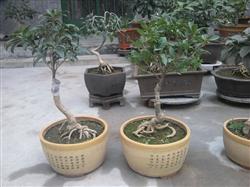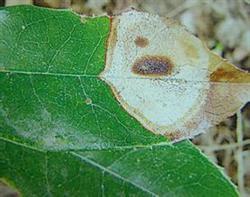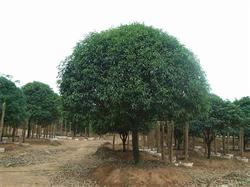What are the main diseases and insects of sweet-scented osmanthus?

Sweet-scented osmanthus, also known as rhinoceros, is a precious aromatic plant specializing in China. Xianning, located in southern Hubei, is known as the "hometown of sweet-scented osmanthus". In recent years, the number of diseases and insect pests of sweet-scented osmanthus has increased, resulting in a decline in ornamental value. the common ones are: anthracnose, leaf spot, rot, gibberellin, wood lice, whitefly, scale insect, diamondback moth, leaf roll moth, coir moth and ruler, etc. combined with the control practice in recent years, its occurrence characteristics and control experience are briefly introduced as follows. The main results are as follows: (1) anthracnose is easy to occur in a high-temperature and humid environment, producing nearly round purple-brown spots on the leaf stem and black spots on it, and withered leaves when the damage is serious. From June to July, the prevention of spraying Dyson Zinc 500 Mel 600 times liquid, pay attention to ventilation and light transmission, reasonable watering and fertilization. Diseased leaves were removed and destroyed in time, and 50% Dysenamine 800Mel 1000-fold solution was sprayed for prevention and control. Or completely remove litter and weeds in the field in winter. (2) Leaf spot disease is easy to occur in high temperature and humid environment, irregular black spots appear on the leaf surface, and there is black mold on the leaf surface, which makes the leaf fall early. From June to July, 140 times of Bordeaux solution was sprayed for prevention, 70% topiramate was sprayed 800 / 1000 times after onset; reasonable watering and fertilization; attention to ventilation and light transmission; removal of litter concentrated burning, and reduction of infection sources. (3) the rot disease mostly occurred in the root neck, and the injured part was immersed in water. The disease spot gradually expanded, resulting in plant growth weakness and even death. It is serious in summer without rainy season. A small amount of sulfur powder was sprinkled around the plant in early spring, and the seriously diseased area was smeared with Fumei arsenic kerosene. The insect pest (1) the adult worms ate the tender leaves, but it was mainly caused by the larvae eating in the cortex of the branches, there were protruding cracks in the damaged cortex and oil dot brown colloid flowed out. When the damage was serious, the bark burst and the main branch or the whole plant withered. Artificial hunting: adult Eclosion period, make use of its false death, vibrate the branches before the dew is dry in the early morning, and kill after landing. Brush the stem: from the occurrence of the adult to the larva for damage, paint the stem with 20m 30-fold dichlorvos emulsion, omethoate emulsion or monocrotophos emulsion, repeat 3-color 4 times (7 min 10 days apart); use 80% dichlorvos emulsion and 10 Mel 20-fold clay, add appropriate amount of water to paste, brush the damaged parts of the branches, so that the adults die when they bite the bark out of the hole. Adult control: the crown can be sprayed 3 times with 1000 times of trichlorfon (about 7 days apart); poison larvae: scrape off the bark during the peak hatching period of larvae and apply 20 times of 80% dichlorvos emulsion. (2) when the adults and nymphs suck the sap of buds, leaves and shoots, the damaged leaves become brown, and the whole leaves turn brown in severe cases, resulting in early defoliation. Nymphs secrete a large amount of honey on the leaves, causing soot disease. During the nymph outbreak, 25% carbaryl wettable powder was sprayed 300 times, or 50% monocrotophos 2000,3000 times. (3) the adults and larvae of whitefly sucked sap on the back of the leaves, causing the leaves to yellowing, wilting, and even death. The insect secretes a large amount of excreta and pollutes the leaves, which can cause soot disease. To catch the spraying of young larvae, we can choose 1500 times liquid of 40% speed killing or 2.5% enemy killing 40ml or 40% imidophos per mu 150ml and so on. (4) the scale insects of sweet-scented osmanthus are red wax scale, bran scale, blow cotton scale and so on. The nymphs and adults of scale insects pierce the host plant tissues with oral needles to absorb sap, causing branches and leaves to wither and die. At the same time, most scale insects can secrete honeydew and induce soot disease. In order to control nymphs at low age, we can choose 1500 times liquid of 40% speed culling or 1000 times liquid of 50% dichlorvos or 40% 150ml per mu of imidophos. (5) the main diamondback moths are yellow diamondback moth, green diamondback moth, green diamondback moth, flat diamondback moth and so on. Most of the larvae overwinter in the cocoon, and the cocoon is attached to the branches, trunks or soil. The hyperlight of adults was strong, the larvae ate leaves, and the young larvae were damaged by clusters, which was the heaviest from July to August. Artificial removal of cocoon pupae and insect leaves; timely chemical control of young larvae, 2000 times of cypermethrin or 50% 150ml per mu of fenitrothion can be selected, and light trapping can be carried out under certain conditions. (6) the leaf roll moth includes brown leaf roll moth, small apple leaf roll moth and macular leaf roll moth. The larvae have the feeding habit of rolling leaves and fixing leaves. Before rolling the leaves of the larvae, spray 40% monocrotophos per mu 80ml or 50% fenitrothion 200ml or 50% parathion per mu 120ml, etc., remove the buds in time or quickly pinch the buds to death from bottom to top. (7) there are many species of coir moth, such as big coir moth, tea coir moth, white coir moth and so on. The larvae can spit out silk to make cocoons, which are covered with all kinds of broken leaves, showing various forms of bags. The larva is in the bag, protruding its head and chest when moving, and moving forward with the negative capsule. The mature larvae pupate in the bag and the larvae feed on the leaves. Spray 95% trichlorfon crystal 1000 times solution or 50% fenitrothion 1000 times solution or 50% parathion per mu 120ml in the larval stage. (8) the inchworm is commonly known as Archworm, the larvae bite the leaves, the newly hatched larvae are active, can spin and droop, disperse the damage by the wind, the adults have phototaxis, and the eggs lay in the gaps in the cortical layer of the trees or between the branches. Use light to trap and kill adults (brush the bark cracks of trees with lime water before the first ten days of April to reduce their spawning and hatching rate). Spraying 95% trichlorfon crystal 1000 times liquid or 40% thiocarbophos per mu 150ml or 50% fenitrothion per mu 200ml and so on. Click to get more sweet-scented osmanthus planting techniques
- Prev

Which are the symptoms of sweet-scented osmanthus brown spot
The pathogen of sweet-scented osmanthus brown spot is Cercospora oleifera. It often happens in Hangzhou and other places. Sweet-scented osmanthus brown spot is a very common disease, which mainly infects leaves, seriously leads to defoliation of the whole plant, and affects flowering and ornamental. It often happens in Hangzhou and other places. Symptomatic characteristics of the injured leaves began to appear small macula, and then gradually changed to yellowish brown.
- Next

What is the value of Osmanthus fragrans?
Consultation content: the planting value of sweet-scented osmanthus trees? Garden use sweet-scented osmanthus evergreen all the year round, luxuriant branches, autumn blossom, fragrance overflowing, can be described as "exclusive three autumn pressure group fragrance". It is widely used in gardens, often as landscape trees, including isolated planting, opposite planting, and forest planting in clumps. In Chinese classical gardens.
Related
- Fuxing push coffee new agricultural production and marketing class: lack of small-scale processing plants
- Jujube rice field leisure farm deep ploughing Yilan for five years to create a space for organic food and play
- Nongyu Farm-A trial of organic papaya for brave women with advanced technology
- Four points for attention in the prevention and control of diseases and insect pests of edible fungi
- How to add nutrient solution to Edible Fungi
- Is there any good way to control edible fungus mites?
- Open Inoculation Technology of Edible Fungi
- Is there any clever way to use fertilizer for edible fungus in winter?
- What agents are used to kill the pathogens of edible fungi in the mushroom shed?
- Rapid drying of Edible Fungi

